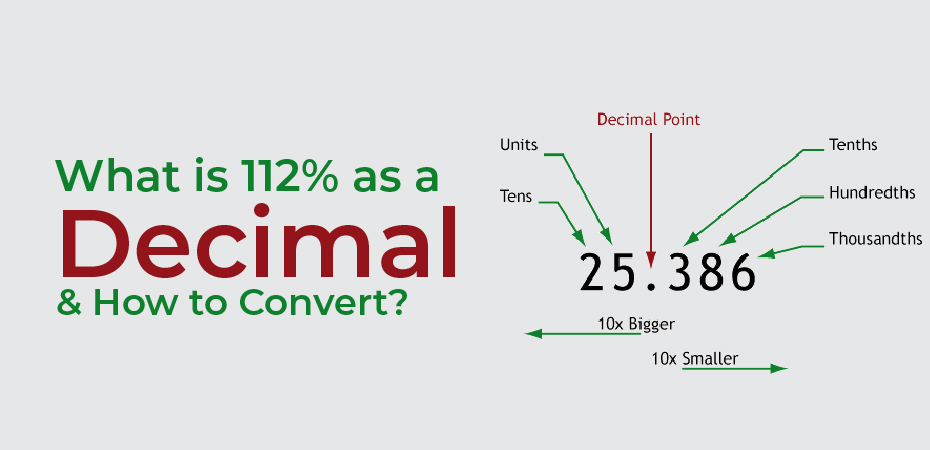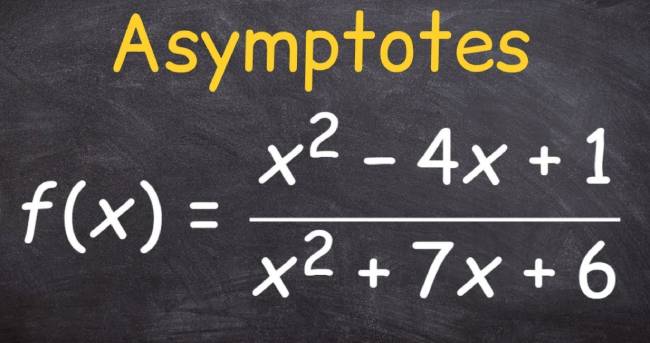What is 112% as a Decimal & How to Convert?
Welcome to 112% as a decimal. In this post, you can find everything about 112 percent as a decimal, including the calculation.
If you’ve been wondering what 112% is in decimal form, or if you’ve been searching for how to convert 112% to decimal form, you’re in the right place.
112 Percent as a Decimal
112 percent, 112 percent, and 112 percent all mean 112 by 100. 112 percent as a decimal equals:
112% as a decimal = 1.12
112 percent as a decimal = 1.12
The math is explained right below, and in case you are also interested in 112% as a fraction – we have that as well. Using our menu search box, you can find this calculation (as well as many others).

Convert 112% to Decimal
In this section, we will show you how to convert 112% to a decimal using the two methods described on our home page in full detail:
Divide 112 by 100, then remove the percent sign:
112% → 112 → 112/100 = 1.12
or
Shift the decimal point two places to the left after removing the percent symbol:
112% → 112 → 11.2 → 1.12
In theory, the second approach of obtaining 112 % as a decimal has the advantage that it does not require a calculator. Therefore, we advise you to memorize that procedure.
Please use the above calculator if you want to convert a percentage different from 112% to decimal form. Simply enter your value without %; the math is done automatically.
You will find some related questions, how to contact us if something needs clarification, and the summary of our article written to answer what is 112% as a decimal.
112% in Decimal Form
As a decimal, you have reached the last part of 112%. Visitors of this article often enter these frequently asked questions in the search engine of their choice:
FAQs
Q: What is 112 Percent as a Decimal?
A; 112 percent = 1.12 decimal.
Q: How do You Write a 112% as a Decimal?
A: In decimal notation, you write 1.12 as the percentage.
Q: What is 112 Percent in Decimal Form?
A: In decimal form, 112 percent equals 1.12.
Q: What is 112 in Binary?
A: 112 in binary is 1110000. To convert 112 to binary, divide it successively by 2 until the quotient becomes 0. In each division step, write the remainder from the bottom to the top to obtain the binary equivalent.
Q: How to Convert 112 to Binary Equivalent?
A: We can divide 112 by 2 and continue dividing until we get 0. Note down the remainder in each step.
- 112 mod 2 = 0 – LSB (Least Significant Bit)
- 56 mod 2 = 0
- 28 mod 2 = 0
- 14 mod 2 = 0
- 7 mod 2 = 1
- 3 mod 2 = 1
- 1 mod 2 = 1 – MSB (Most Significant Bit)
From MSB to LSB, write the remainders. As a result, the decimal number 112 in binary is 1110000.
Q: Find the Value of 2 × 112 in Binary Form?
A: We know that 112 in binary is 1110000 and 2 is 10. Using the binary multiplication rules (0 × 0 = 0; 0 × 1 = 0 ; 1 × 0 = 0 and 1 × 1 = 1), we can multiply 1110000 × 10 = 11100000 which is 224 in the decimal number system. [112 × 2 = 224]
Q: What is the Binary Equivalent of 112 + 66?
A: 112 in the binary number system is 1110000 and 66 is 1000010. We can add the binary equivalent of 112 and 66 using binary addition rules [0 + 0 = 0, 0 + 1 = 1, 1 + 1 = 10 note that 1 is a carry over to the next bit]. Therefore, (1110000)₂ + (1000010)₂ = (10110010)₂ which is nothing but 178.
Q: How Many Bits Does 112 in Binary Have?
A: We can count the zeros and ones to find out how many bits are used to represent 112 in binary i.e. 1110000. Therefore, 112 is represented in binary by 7 bits. With our information, you should be able to answer these FAQs without difficulty.
However, if you think there is something missing, or if you want to ask something related, please use the comment form below. You can also send us an email with the subject line 112 percent.



